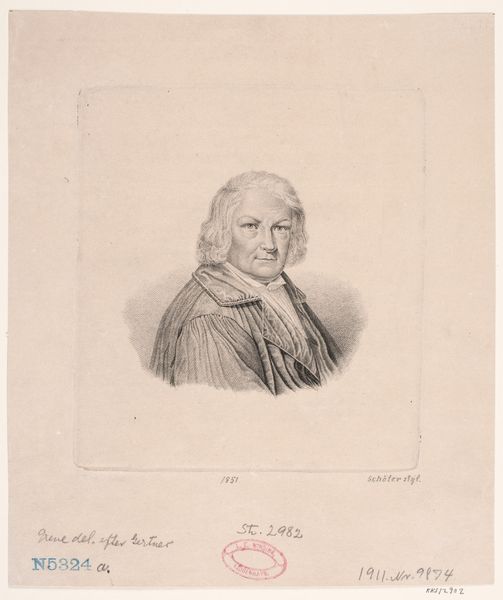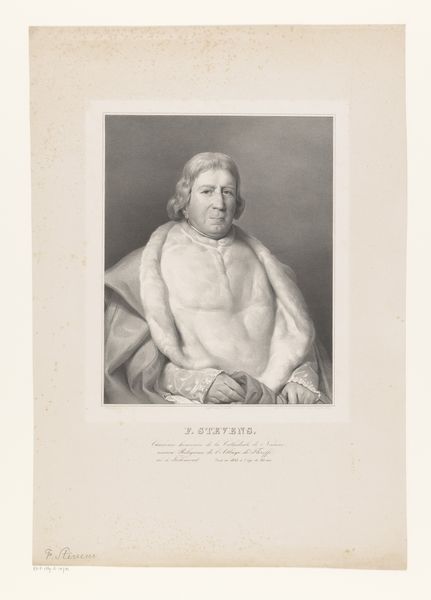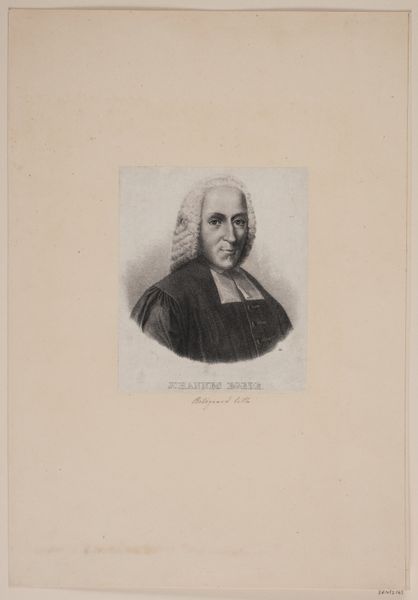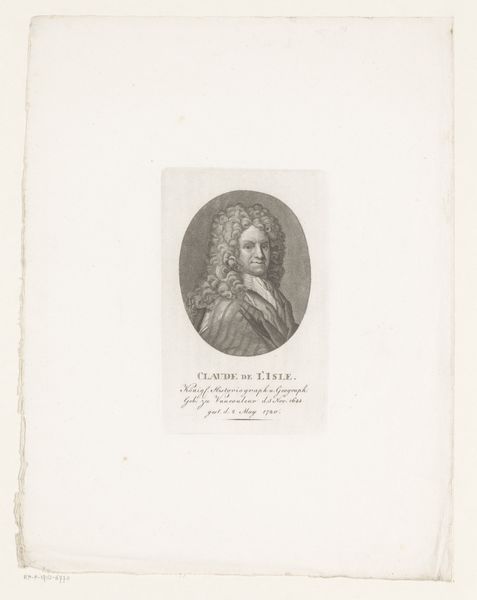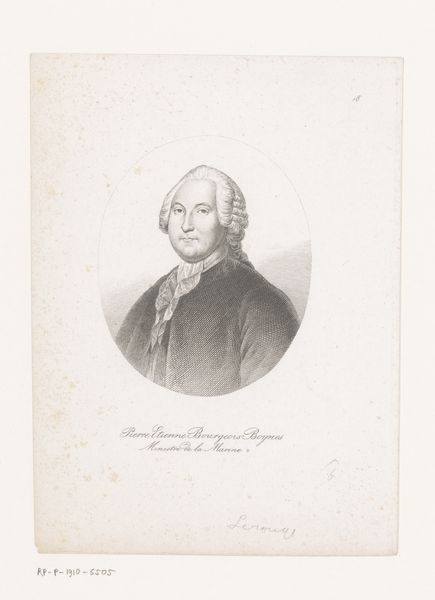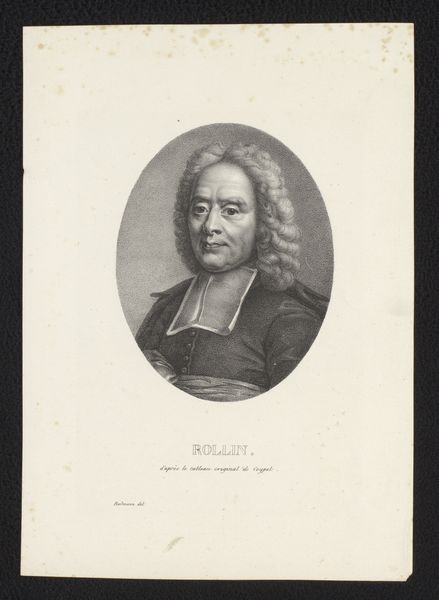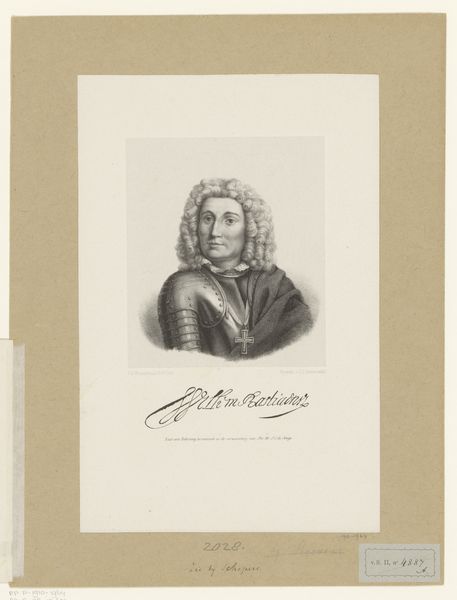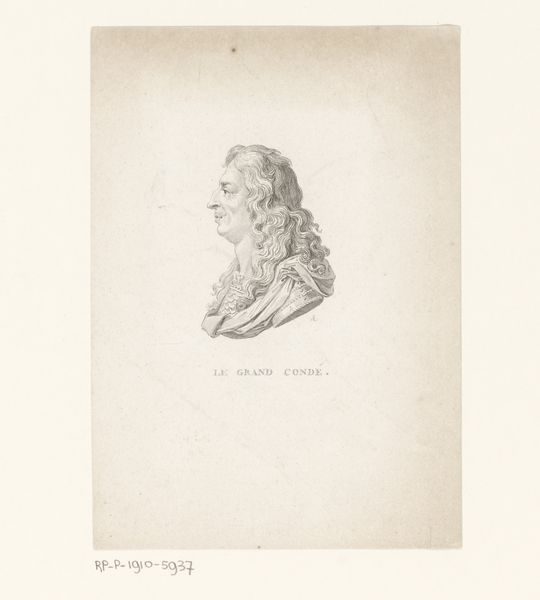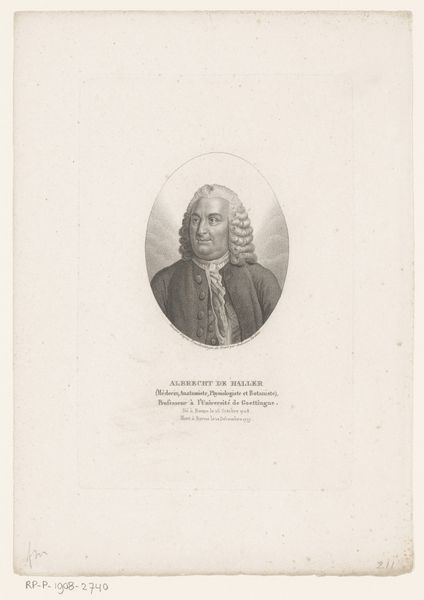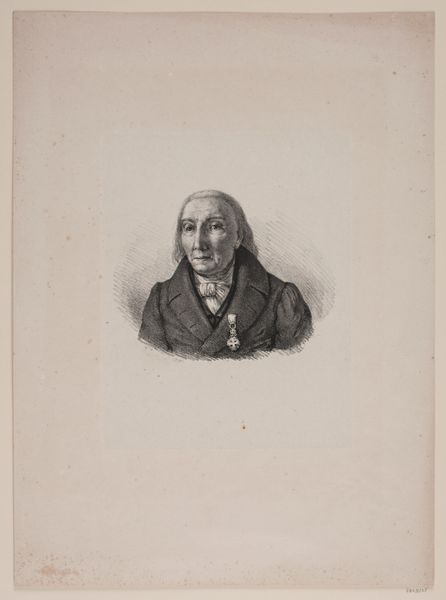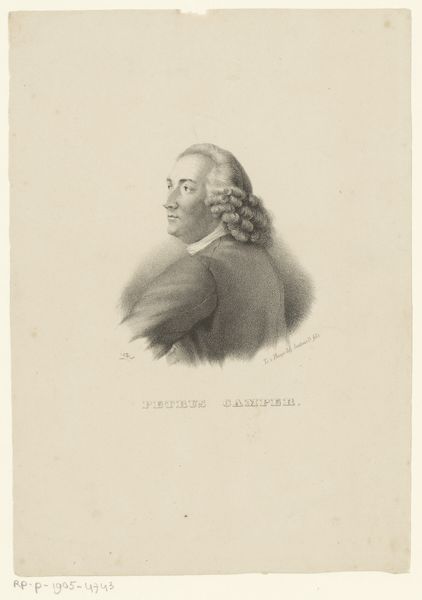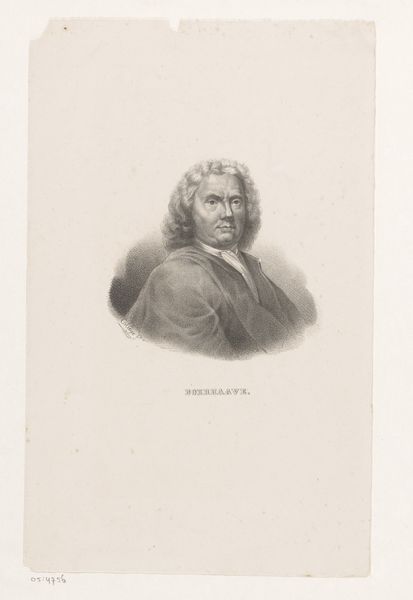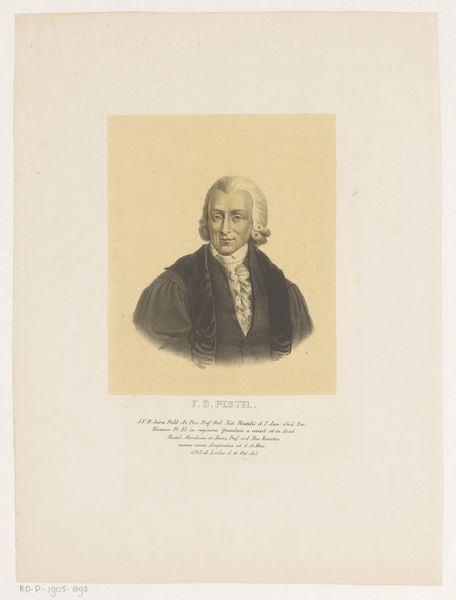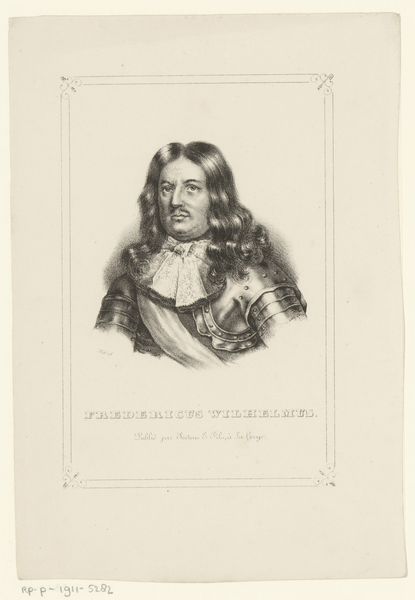
Dimensions: height 179 mm, width 142 mm
Copyright: Rijks Museum: Open Domain
Curator: It's a rather austere image at first glance, don’t you think? Editor: Yes, it does seem to emanate a certain somber mood, a formality rendered in fine lines. Curator: This is "Portret van Jean-Baptiste de Machault d'Arnouville" by Nicolas Edouard Lerouge, made between 1838 and 1841. A historical record if you will, rendered in the medium of engraving. The individual portrayed held the esteemed position of Controller-General of Finances, so that partially accounts for the air. Editor: Interesting. Looking at the meticulous hatching and cross-hatching, the production seems intensely laborious. You can almost feel the craftsman's hand carefully carving out the image. There is that incredible degree of fine labor at play. It makes you wonder about its availability to, say, the working class. Was art like this really within the means of anyone but the aristocracy at this time? Curator: Perhaps not, but the act of reproducing the image, the printing itself, has always democratized to some degree. As for the symbolism, his garments certainly broadcast status – but note the inclusion of the medal. This medal visually denotes membership in the Order of the Holy Spirit. Its radiant cross serves as a powerful visual reminder of divine right and ordained authority. It is there, deliberately positioned as a marker. Editor: And the line work helps convey texture. Look at the fur trim on his robe and the almost luminous quality of the hair. A portrait intended for wider circulation, therefore it’s created via print, is revealing of so many conditions. What the materials afford, the means of disseminating…it all contributes to social knowledge about who this man was, or at least how they wished him to be perceived. Curator: Precisely. By focusing our lens, it becomes less of a mere portrait, and more of a narrative. Editor: In thinking about artistic creation within social systems, it all adds layers to our historical view. Curator: Indeed. By carefully tracing visual language, and accounting for labor practices, we gain a deeper understanding of its original environment and what persists over time.
Comments
No comments
Be the first to comment and join the conversation on the ultimate creative platform.
